Giving new life to old things–it’s eco-conscious, and it’s a very good thing. We may throw our unwanted belongings in the trash, or donate to Goodwill or Salvation Army or other worthwhile charities. But we may also consider up-cycling, giving new life to old items.
Recently I have been using eco-printing as a way to make use of garments that I had shoved to the back of my closet. There was nothing wrong with any of these three tops, but I simply wasn’t wearing them. Why? The Gap cotton T-shirt was very comfortable to wear–100% organic cotton–and I believe GAP products give value for the money. But the color was puce, a color which was unflattering to me.
Another top–one by Tahari, modal fabric and versatile white–was a bit too clingy and a bit too sheer for my taste. The third top was sleeveless, viscose, ivory, flowing and very flattering–but it wasn’t too exciting. So I decided to eco-print the tops, and at the same time, continue my experiments with natural dyeing of cellulose fibers.
I gathered my leaves and flowers one day–all tops had been mordanted previous to the eco-printing session. First up was the sleeveless viscose top, which I bundled with a variety of leaves from my deck garden, including geranium, mint, and smoke bush. I simmered the top in plain water, along with a few other scrap pieces of fabric, which I use for slow-stitching projects.
In the second, larger pot, I simmered pomegranate exhaust bath along with some spent leaves from previous dyeing. I rolled the Tahari top with loropetalum, plum and smokebush leaves. The GAP T-shirt was sprinkled with Japanese maple, rose and smoke bush leaves. Both pots simmered for an hour or so and then cooled overnight. The next morning, all fabric was removed from the dye pot
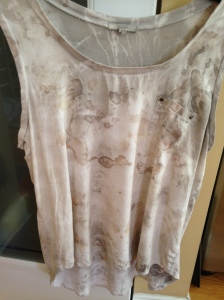
and allowed to rest. But because I am so
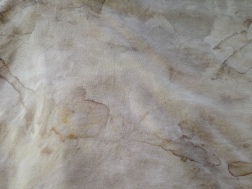
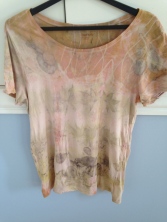
impatient, I did unroll the still wet sleeveless top first. I set aside the other two tops to dry, but couldn’t resist opening the GAP top later in the evening. The Tahari top was allowed to dry for two days, and then was unrolled.
How did they turn out? You can see from the
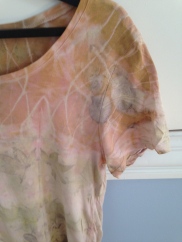
photos below. I am pleased and thrilled with the rebirth of my garments and am happily wearing all three–but not at the same time.
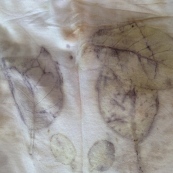
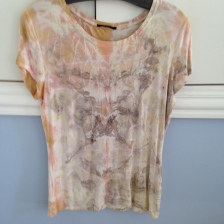
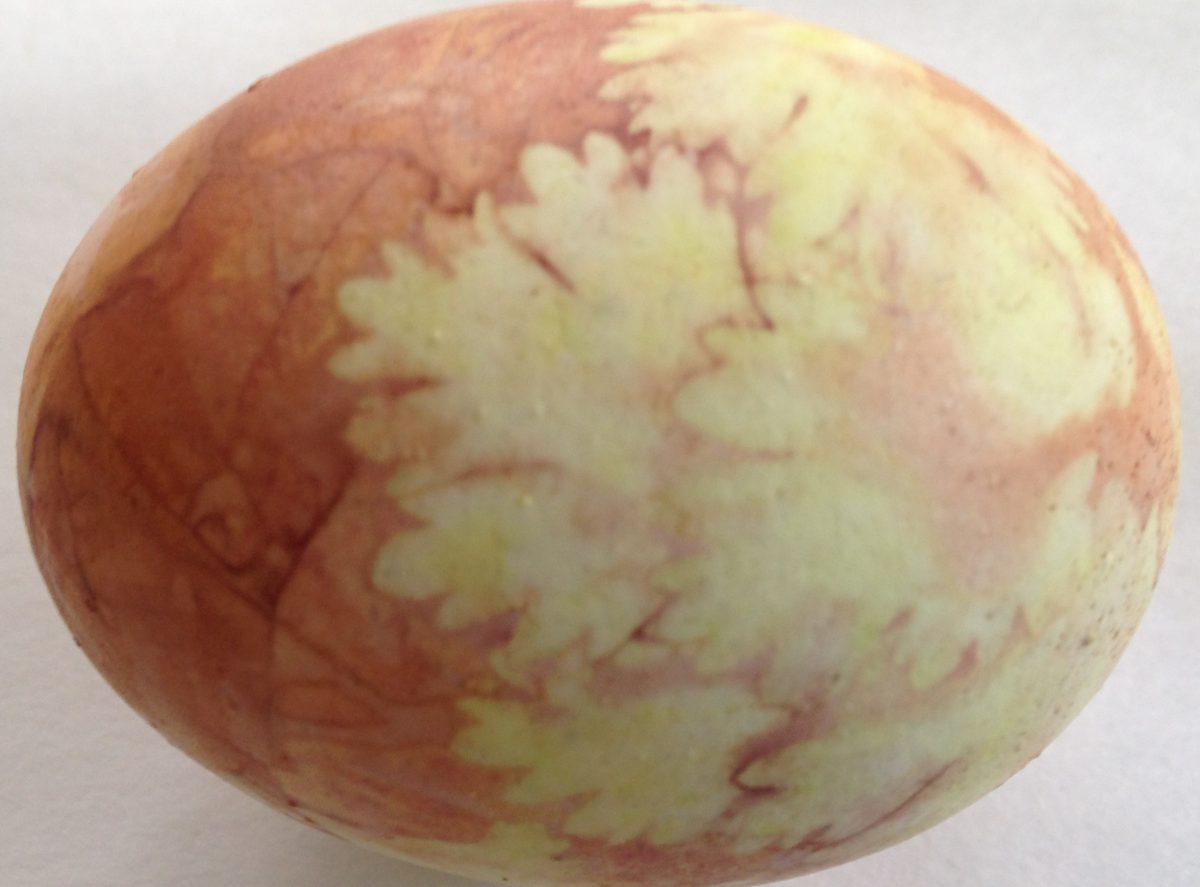

Beautiful results Cathy! I need to check my closet as well. I’ve used indigo and acid dyes to rejuvenate old faves, but these are really lovely and unique.
LikeLike
It’s amazing what transforms a piece of cloth with a bit of ingenuity and some help from Mother Nature! Thanks for visiting.
LikeLike
these are all so beautiful Cathy, cant wait to have mine.
LikeLike
So glad you like them! Let’s plan a dye session soon for you!
LikeLike